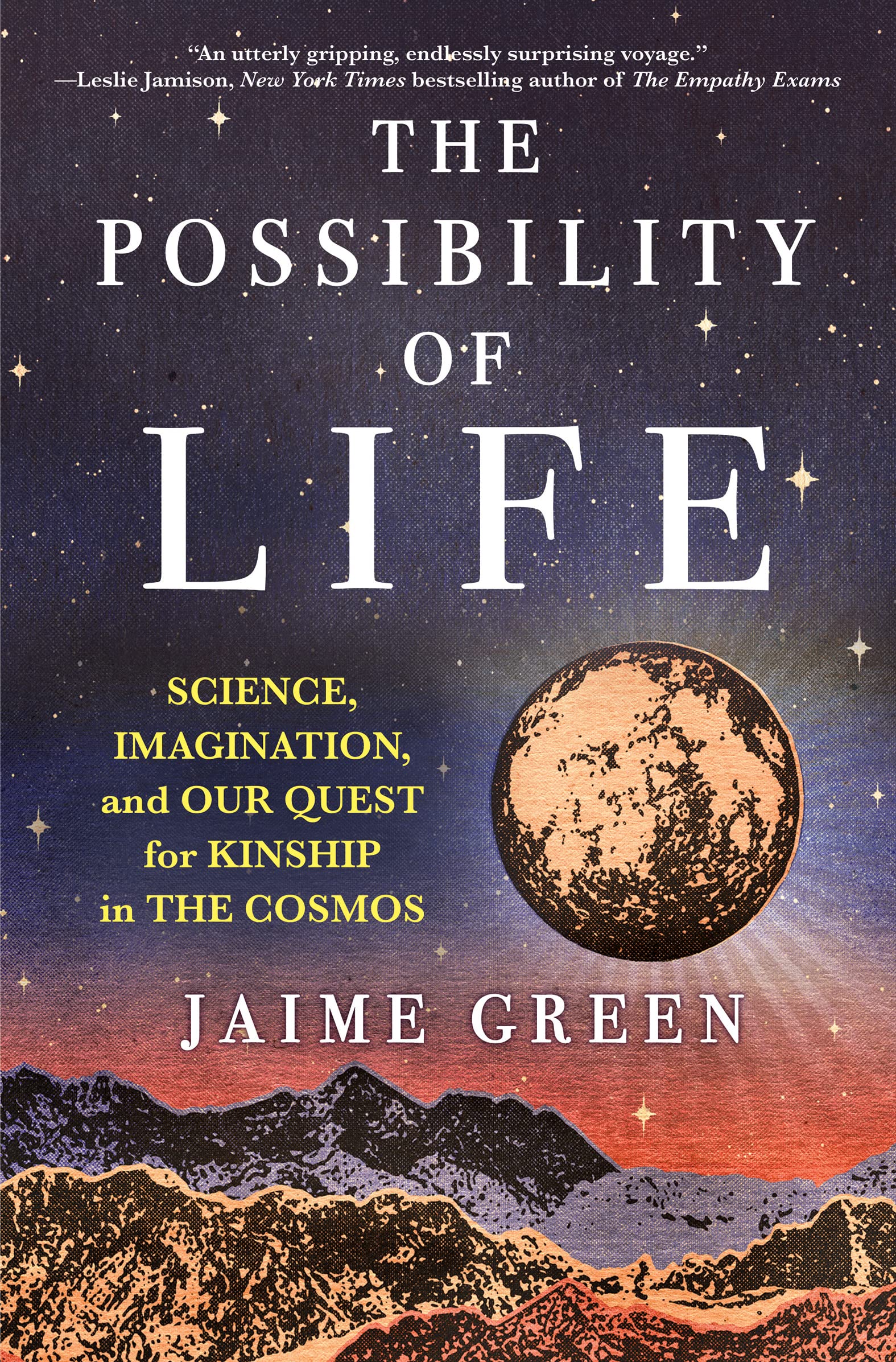- The Good: A fun and approachable search for alien life
- The Bad: Despite my love of Star Trek, this book relies too heavily on pop culture
- The Literary: Some footnotes and references
Science journalist Jaime Greene takes a wide-angle view of the search of extraterrestrial life, covering the science history of Galileo and Copernicus, through to physics, biology, and astronomy, to science fiction. Greene seeks to understand not just the numeric probabilities, but humanity’s search for aliens as a reflection of our hopes and dreams.
Right off, we start with the Drake Equation, a formula to calculate the possible number of civilizations that could transmit a signal into the cosmos. Created in 1961 by Frank Drake from SETI (Search for ExtraTerrestrial Intelligence), the equation is full of factors that are hard to quantify, so it’s best used for its concepts and estimation. Greene explores several factors in this equation, which ultimately leads to questions about ourselves more than anything else.
What would alien life look like? What would it mean to find life outside of our own world? What is sentience, and would we know it if we saw it? How could we communicate?
What stands out to me about this book is how personal and conversational it is. Greene’s voice is ever-present, so if you don’t take to it immediately, I doubt this’ll be the book for you. For one, Greene tells stories of her own childhood and shares books she particularly enjoys. The book also includes interviews with scientists, and, again, her voice as the interviewer stands out.
But Greene’s voice is enthusiastic. The tone is full is wonder and optimism, and a significant amount of time is spent on pop culture references, from Star Trek to A Wrinkle in Time to Avatar. The narrative is approachable and organized in such a way that the science-y bits are spread out between easier material. Greene believes, and I agree, that the power of imagination in science fiction inspires both young and old scientists alike.
I do find myself wanting a bit more meat, and especially more in-depth science. The book often relies too heavily on those pop culture references. The science that is there doesn’t have a cohesive theme, so the facts seem random and difficult to remember. Ultimately, the insight that human search for life is a reflection of ourselves is not particularly revelatory.
Highly recommended as joyful but shallow approach to science and science fiction!
